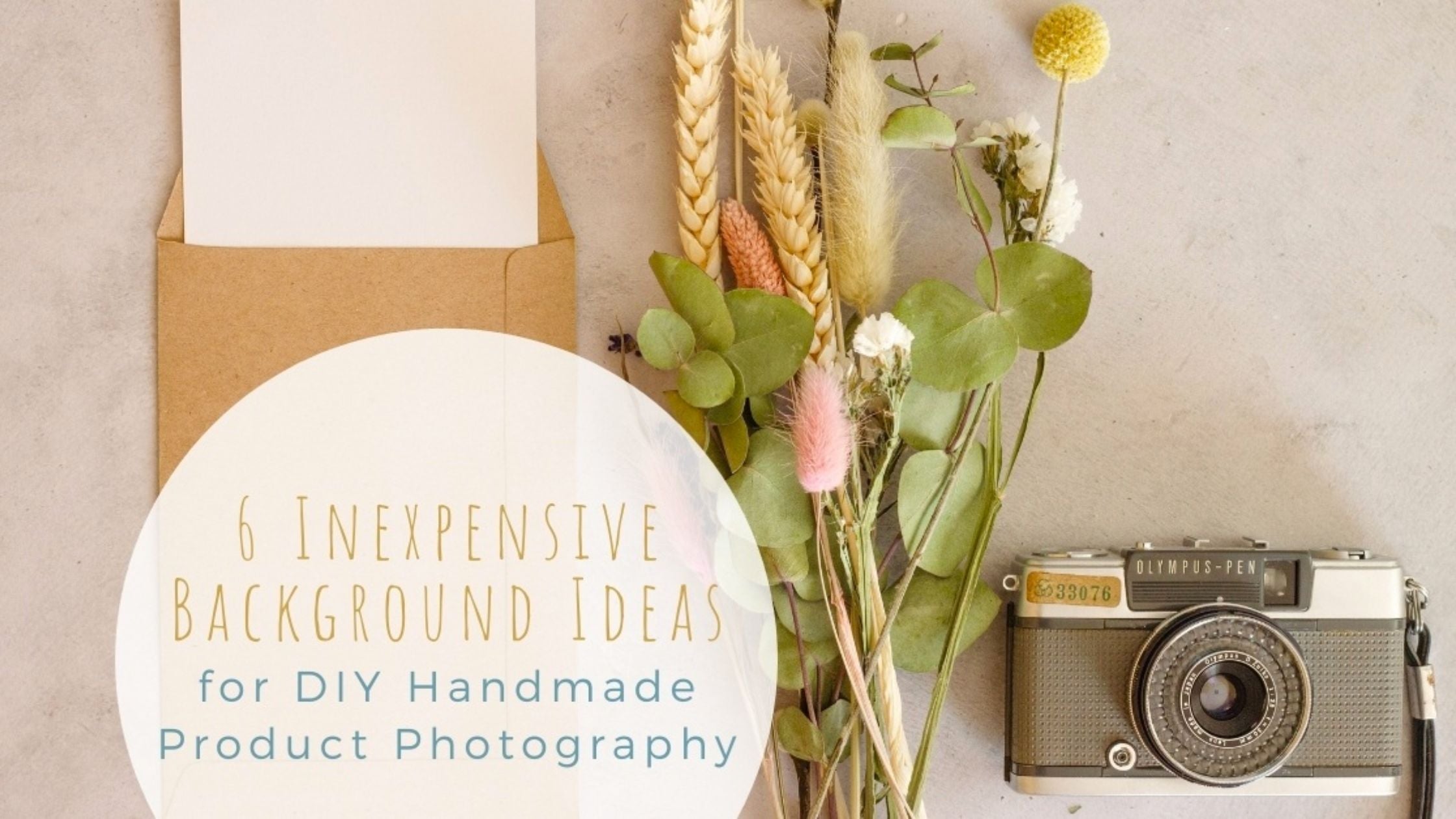Finding the right background for your products can sometimes be a bit of a challenge. In this blog post I'm going to share with you six inexpensive options that I've used for my handmade creations and why I chose them.
1. White Roller Blind
This was one of the first backgrounds I used. I wanted a simple and easy way to create that beautiful, seamless look. I could have used a large sheet of paper or card, but I decided to invest a small amount of money ($20 or less) so that I could have something that was:- thicker;
- more portable;
- gave me a much larger area to work with;
- didn’t need to be attached to anything;
- didn’t get worn out, crumpled or tattered easily; and
- compact and easy to store.
My dining chairs have tall backs, so I was able to drape the blind over them, so I didn't need to attach it to anything. I let the blind drape to the floor for larger objects or used it with a portable table for smaller ones.
Depending on the size of your products you could also turn the chairs around the other way and use the seat part as a tabletop. The portability of this set up is great because you can easily move it to capture the best light.
2. Foam Core Board
Foam core board can be purchased from craft shops and sometimes major department stores have it quite cheaply. I got mine from Kmart for just $5!
I love using it for flat-lays because it gives a nice even, non-reflective surface and is easy to position where the light is best. In a future blog post I'll be sharing exactly how I do my flat-lays and how I use extra pieces of foam core board as reflectors to add extra light and minimise shadows.
3. Printed Contact
Covering a mountain of schoolbooks for three kids with this tricky sticky stuff wasn't always a pleasant experience, but I've since discovered that the more decorative contact seems to be a bit thicker and easier to work with.
I bought a roll of white marble contact for $3 and covered one side of a piece of foam core board. I now have a dual sided background to use. I chose the marble one because it's a nice subtle pattern that doesn't distract from the products but there are many others that would work just as well.
4. Waffle Blanket
When I was photographing my baby products, I wanted to create a nice soft look, so I used a white waffle blanket that I found in the baby section of a department store. It gave a lovely textured appearance without being distracting.
Originally, I used a white throw rug that I already had at home, but found that even though the pattern was subtle, it was still distracting. I found the waffle pattern to be just right and it also helped to give the photo a "baby" look making it easier for the potential buyer to imagine using my product with their baby.
5. Artist's Canvas
These come in many different sizes so it's easy to find the right one to suit your products. What I love about these is that they allow you to create a nice white background with a very subtle texture to create some interest.
They can be used on the floor for flatlays or on a table and propped against a wall for a backdrop. Using two together (one as a tabletop and other at right angles as a backdrop) can give you a white desktop look because it will have a line in the background where the two pieces meet.

6. Placemats
Using a placemat on a plain white background helps to add some colour and texture without being overbearing. In the photo below, if the green placemat was used on its own as the only background it would have been competing with the other elements for attention.
By using it with plain white, it's still a feature but not the main focal point. It also adds some depth and context to the photo. As with all backgrounds, choosing subtle designs and textures is best so they don't compete with the product for attention.
The type of everyday items you can use as backgrounds is endless really, and you probably already have a lot of things at home without buying anything extra. Some important things to remember are:
- Use subtle designs and textures so you don't take the attention away from your product.
- Avoid using fabric, unless you're going to take the time to iron out every crease, every single time you use it.
- Try to use backgrounds that go with your product, i.e. using a waffle blanket gave a soft, warm, cuddly feeling to my baby product photos. This helps to give your photos some context and emotion as well as helping the potential buyer imagine using your product.
Words by:
Photographer & Maker,








